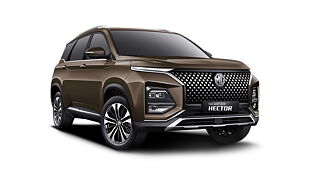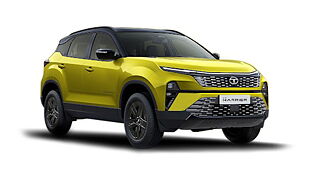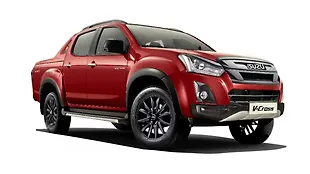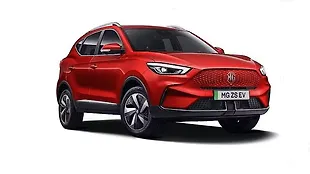Nissan Teana [2007-2014] 250XV
|Rate & Win
- Teana [2007-2014]
- Images
- Specs & Features
- Variants
- User Reviews
discontinued
Variant
250XV
City
Show price in my city
Rs. 25.28 Lakh
Last Recorded PriceNissan Teana [2007-2014] 250XV Summary
Nissan Teana [2007-2014] 250XV is the top model in the Teana [2007-2014] lineup and the price of Teana [2007-2014] top model is Rs. 25.28 Lakh.
Read More
Teana [2007-2014] 250XV Specifications & Features
- Features
- Features
Features
Exterior
Braking & Traction
Safety
Comfort & Convenience
Lighting
Locks & Security
Doors, Windows, Mirrors & Wipers
Entertainment, Information & Communication
Mobile App Features
Storage
Airbags
Seats & Upholstery
Instrumentation
Manufacturer Warranty
Other Teana [2007-2014] Variants
| Variants | Price | Specifications | |
|---|---|---|---|
Rs. 25.28 Lakh | Get Offers from Dealers |
Teana [2007-2014] Alternatives
Explore Used Nissan Teana
Write a detailed review and you can win Amazon voucher worth Rs. 2,000
Nissan Teana [2007-2014] 250XV Reviews
- (1 Ratings) 1 Reviews
1.0/5
- Handsome Exterior Looks, Spacey Back Seat Format...High Demand In Maintenance & Un Reliable Spare Parts + Rattling SunroofDisappointed and having bad experience on Nissan Teana 2010/2011 2500 cc type XV with CVT Transmission, here is total review, trying to be as thorough as possible and for additional information we're using this as metropolitan city car with more than 9 million city populations. 1) CVT transmission just works fine & well, never have any issue with it as long as we change the AT oil on time on proper spec 2) Fuel consumption with bad, average and good traffic combined around 1 litre = 8 KM 3) I really love how the exterior looks, calm, elegant, classic, quite ageless with long body chassis reflecting to 4) Comfortable seating experience for back seat passenger whose using driver frequently + lovely back seating armrest with wood panel and 5) Behind armrest, there's a connecting partition for access to trunk (lovely feature) 6) Leather seat cracks after its 6th and 7 th year, really falling apart and torn 7) Audio for the car at this price has no Bluetooth, no camera both reverse and front is not available, steering wheels with audio control is a yes 8) Engine and part is having so many problems: a) Tensioner acting up, I can change my tension once every year or twice per 3 years with mileage lower than 30K KM, always committed to using original spare parts but still, I can go nuts if I do not change it since the metal friction noise will turn you mad b) Air con: in specific evaporator broke twice in 40K KM and not cool enough for tropical country whilst good side it has dual mode for left and right passenger preference c) Steering rack causing mild leak that went through underneath bushing and creating new problem in the wheel alignment whereas its normal to get half side of my tire worn out easily d) Water exit way from sunroof, you have to manage this and check water outlet below back passenger door both left and right, remove the clip on the door seal rubber and water will normally flow from there ( a lot sometimes) after rainy season e) Sunroof rattles for sure you can hear sometimes on a slight or bumpy road soft crack crack crack sound, for ones with sensitive ear, this will be hard to bear f) Trunk cover made out of Styrofoam with fragile quality so every time we need to take out the spare tire it will be torn g) Start and stop engine button failed to work on 10th year even with good maintenance (still on process fixing this as I am writing this) h) Right rear view mirror motor dead on its 7th year without any sign I) Right driver side power window acting up a lot and stuck so often as well j) Without original brake pad you'll hear lots of squeaking sound everytime you hit the brake k) Steering wheel leather also cracks before 6th year l) Radiator top cap (black plastic part) just crack and crumble and the significant sign was radiator water kept on decreasing quite significant but not to an empty stage m) Large trunk capacity Please take note that my car is well maintained and oil exchange happens every 4000 - 4500 KM using semi synth oil 10/40 and or 5/30 For me to be honest I am disappointed with this car, its taking so much time for maintenance and tough for working people that sits a lot within traffic and do not have enough time to cope with these things and lots of money too whilst spare parts availability is far from abundant. Thinking of selling it end of this year as I start to give up after a fixed comes b problem and c to x y z makes my heart jumps. This is a Japanese car as troublesome and sensitive as EU car brands with prestige that might be more worth itRating parameters(out of 5)5
Exterior
5Comfort
1Performance
3Fuel Economy
3Value For Money
About the ReviewerPurchase UsedDriven forFew thousand kilometersWas this review helpful?72
Teana [2007-2014] 250XV FAQs
Q: What is the price of Teana [2007-2014] 250XV?
Teana [2007-2014] 250XV price is Rs. 25.28 Lakh.

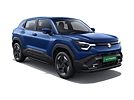
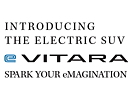

![Nissan Teana [2007-2014] 250XV Nissan Teana [2007-2014] 250XV](https://imgd.aeplcdn.com/664x374/cw/cars/discontinued/nissan/teana-2007-2014.jpg?q=80)
![Nissan Teana [2007-2014] Dashboard Nissan Teana [2007-2014] Dashboard](https://imgd.aeplcdn.com/664x374/ec/9726/img/l/Nissan-Teana-Dashboard-14982.jpg?v=201711021421&q=80)
![Nissan Teana [2007-2014] Interior Nissan Teana [2007-2014] Interior](https://imgd.aeplcdn.com/664x374/ec/9726/img/l/Nissan-Teana-Interior-14983.jpg?v=201711021421&q=80)
![Nissan Teana [2007-2014] Rear View Nissan Teana [2007-2014] Rear View](https://imgd.aeplcdn.com/664x374/ec/8221/img/l/3306.jpg?v=201711021421&q=80)
![Nissan Teana [2007-2014] Left Rear Three Quarter Nissan Teana [2007-2014] Left Rear Three Quarter](https://imgd.aeplcdn.com/664x374/ec/8221/img/l/3305.jpg?v=201711021421&q=80)
![Nissan Teana [2007-2014] Left Rear Three Quarter Nissan Teana [2007-2014] Left Rear Three Quarter](https://imgd.aeplcdn.com/664x374/ec/8221/img/l/3354.jpg?v=201711021421&q=80)
![Nissan Teana [2007-2014] Left Side View Nissan Teana [2007-2014] Left Side View](https://imgd.aeplcdn.com/664x374/ec/8221/img/l/3304.jpg?v=201711021421&q=80)
![Nissan Teana [2007-2014] Left Side View Nissan Teana [2007-2014] Left Side View](https://imgd.aeplcdn.com/664x374/ec/8221/img/l/3307.jpg?v=201711021421&q=80)





